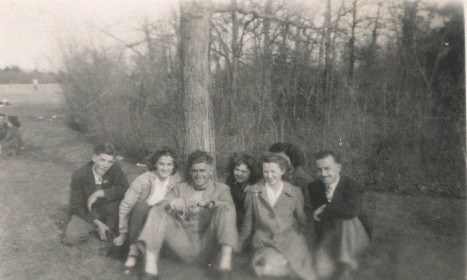COLUMN: Tales from the Gravel Ridge – The immeasurable strengths within communities
Advertisement
Who of us cannot name women who have enriched our lives, often in ways that we did not even realize were happening. If we were blessed with a mother who cared for us in ways too numerous to name or even remember, then we must surely acknowledge that we have taken for granted how much she gave of herself. And, if truth be told, going by what I have personally experienced, my mother continued giving of herself long after I was no longer physically dependent on her.
The work and influence of women, as we must surely acknowledge, goes far beyond bearing children and nurturing them. Indisputably, the significance of motherhood should not be disparaged in any way. Nevertheless, all women and girls the world over, regardless of their status in their respective families or in the social circumstances in which they function, are entitled to the rights that were so concisely and powerfully expressed in this year’s theme for the celebration of International Women’s Day on March 8. The theme, in case we have already forgotten it amidst the noise and confusion of the moment, was, … “For ALL Women and Girls: Rights. Equality. Empowerment.”
I know that I can speak from personal experience, although I must admit that it has taken me a long time to realize that the women of my childhood in Rosengard were a powerful force within that larger community. A large proportion of Rosengard families were descendents of Mennonites who had emigrated to Canada during the 1870s. When I was a child it always seemed to me that those families, having lived in our community for a period of time approaching seventy-five years, had large numbers of relatives, including grandparents, aunts and uncles, and, of course cousins with whom they could interact. For some of the rest of us, the concept of grandparents only became a reality when our own parents filled that role when their eldest children began having families of their own. In retrospect I realize that those families that had such a long history in our community, also thereby had a social sphere of influence that provided strength and encouragement during difficult times, along with celebrations during religious holidays.

There was a period in the history of Rosengard, most notably it seems to me during the era of the worldwide depression of the 1930s, that women gathered in a home of one of them, for an afternoon of socializing and of spiritual encouragement, as well as exchanging practical information on homemaking generally, along with sharing cooking and baking ideas, and recipes.
On one occasion, I have been told when my mother had baked a cake for such an event, she was asked for the recipe since it had turned out very well. Being as resourceful as I well remember my mother being, she was unable to provide a written recipe since she had simply mixed the cake batter with ingredients she had on hand, and baked it. As my eldest brother Ben commented when I asked him about our mother’s culinary ability, “She knew how to make it work.”
Sometimes sharing actual material items might also occur. Such sharing might for example be in providing individuals with a pattern for a garment of one sort or another that could be copied. The copies might well be made on discarded newspapers since all of them knew that resources were so limited that buying paper for such a project would have been out of the question. Indeed, my late mother-in-law, growing up in a Ukrainian community in the Dauphin area, knew very well about such material limitations. She recalled writing her homework lessons on store wrapping paper, even going so far as turning the paper upside down, and continuing to write her answers between the lines she had previously written.
These gatherings of Rosengard women of long ago, are only one example of the strength of a small gathering in that it was an opportunity for rejuvenation, providing hope and encouragement during very challenging times.
Our community was strengthened by a range of communal interactions, some more structured than others. To my mind these connections had the effect of building an environment that fostered and supported diversity and inclusiveness. How could I not be thankful for such a legacy.
